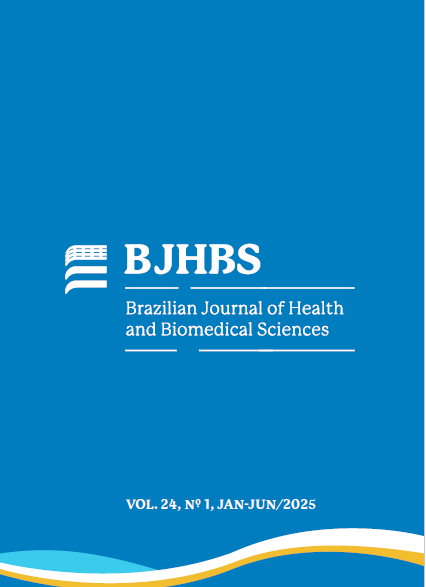Analysis of the most commonly used clinical protocols in regenerative endodontic treatment
DOI:
https://doi.org/10.12957/bjhbs.2025.93439Resumo
Introduction: Regenerative endodontic treatment (RET) does not yet have a well-established clinical protocol. Objective: The aim of this study was to carry out a scoping review of the RET clinical protocols described in the literature. Methodology and resources: The question used was: "What are the differences among published RET protocols and which are the most widely used?" The search was carried out in the Lilacs, BVS, PubMed, and Scielo databases. Studies reporting on pulp revascularization protocols published in the last ten years were included. Results and discussion: Seventy-four studies met the inclusion criteria. Most of the studies used sodium hypochlorite (NaOCl) as an auxiliary substance, either alone or in combination with other substances; however, the
concentration of NaOCl used in the protocols varied greatly (between 0.5% and 6%). In more than 90% of the studies, treatment was carried out in 2 or 3 sessions, with intervals between sessions that ranged from 24 hours to 4 weeks. The most used intracanal medication was triple antibiotic paste, followed by calcium hydrox ide. Blood clots were the most used type of scaffold, mineral trioxide aggregate (MTA) was the most used material for cervical sealing, and composite resin was used for coronal shielding.
Conclusions: Performing the technique over multiple sessions, using triple antibiotic paste as intracanal medication, blood clot as a scaffold, and MTA for cervical sealing are some of the most common characteristics and materials found in clinical protocols for RET.
Downloads
Downloads
Publicado
Como Citar
Edição
Seção
Licença
Copyright (c) 2025 Brazilian Journal of Health and Biomedical Sciences

Este trabalho está licenciado sob uma licença Creative Commons Attribution-NonCommercial 4.0 International License.
Termo de transferência de direitos autorais/conflitos de interesses: após o aceite final do artigo para publicação, os autores deverão enviar o termo de transferência dos direitos assinados pelo autor principal representando cada um dos autores. Neste termo deverão ser declarados quaisquer conflitos de interesses.
